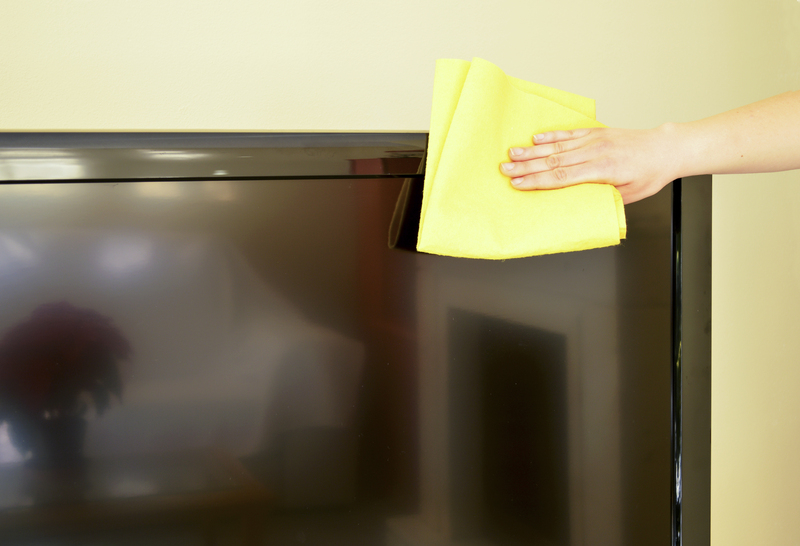Stovetop Burnt Resolutions: Effective Cleaning Strategies
Posted on 26/08/2025
Stovetop Burnt Resolutions: Effective Cleaning Strategies
The kitchen truly is the heart of every home, and your stovetop is one of its most hardworking appliances. But with all the sizzling, frying, simmering, and boiling, it's inevitable that burnt messes can accumulate, leaving behind stubborn, unsightly stains. If you're tired of dealing with burnt stovetop messes, this comprehensive guide on stovetop burnt resolutions will take you through a selection of effective cleaning strategies, guaranteed to restore the beauty and shine to your beloved cooker. Whether you're facing a minor spill or a full-blown caked-on disaster, read on for expert tips, product recommendations, and step-by-step methods for tackling even the most resilient burnt-on food.
Understanding Burnt Residue on Stovetops
Before diving into effective burnt stovetop cleaning techniques, it's important to understand the nature of the mess you're dealing with. Burnt food and spills are notorious for clinging to metal, glass, and ceramic surfaces due to heat-induced chemical reactions. These burnt residues, if left untreated, may even cause permanent discoloration or gradually degrade the surface of your stovetop. Recognizing the specific material of your stove--be it glass, ceramic, stainless steel, or enamel--can make a big difference in selecting the right burnt stovetop cleaning solution.
- Glass and ceramic cooktops: Usually flat, sleek surfaces that demand non-abrasive cleaners.
- Stainless steel stovetops: Resistant to corrosion but prone to scratches from harsh scrubbing.
- Enamel-coated burners: Durable but can chip or lose their sheen with aggressive cleaning.

Immediate Actions: Don't Let It Set!
When it comes to burnt stovetop spill cleaning, timing is everything. Acting quickly can make a world of difference. If you catch a spill as it occurs, use a damp cloth or paper towel to wipe it away once the surface has cooled. Never attempt to clean hot surfaces to avoid burns.
- Allow the stovetop to cool completely before starting any cleaning process.
- For fresh spills, a soft microfiber cloth dampened with warm water is usually sufficient.
- For slightly more stubborn messes, a drop of dishwashing liquid may help cut through grease.
Routine Cleaning: Keeping Your Stovetop Fresh
Daily Clean-Up Tips
A spotless stovetop begins with consistent care. Make it a habit to wipe down your stove after every use. Here's a simple routine to maintain a gleaming cooker:
- Remove grates and burner covers (if applicable) and soak them in warm, soapy water.
- Wipe the stovetop surface gently using a non-abrasive cloth or sponge.
- Rinse the surface with clean water to remove any soap residue.
- Dry thoroughly with a lint-free towel to prevent streaks or water spots.
Pro tip: For quick cleanups, keep kitchen wipes or a spray bottle filled with diluted white vinegar handy.
Deep Cleaning Burnt-On Stovetop Stains
Even with your best efforts, sometimes burnt residues still manage to bake themselves onto your stovetop. Here's how to resolve tough burnt stains using both natural ingredients and commercial cleaners.
The Baking Soda and Vinegar Method
- Sprinkle a generous layer of baking soda over the burnt area.
- Dampen a clean cloth with white vinegar and place it over the area. The fizzing reaction helps lift the burnt-on food.
- Let it sit for at least 15-30 minutes.
- Gently scrub the area in circular motions using a non-abrasive scrubbing pad.
- Wipe clean with a damp cloth and repeat if necessary.
This method works exceptionally well for glass and ceramic stovetops but also proves effective for most sealed surfaces. Avoid using excessive force, which might scratch more delicate cooktops.
Tackling Hardened Burnt Stovetop Residue with a Razor Blade
If soft pads and natural cleaners aren't sufficient, consider a razor blade scraper designed for stovetops. This is a superb solution for glass or ceramic cooktops:
- Hold the razor blade at a shallow angle (about 45?) and gently scrape away the burnt residue.
- Be patient and take care not to dig into the glass, as this may cause scratches.
- Follow up with a baking soda and vinegar paste for remaining discoloration.
Note: Never use a razor blade on painted or enameled surfaces.
Commercial Burnt Stove Cleaner Products
- Use stovetop cleaners such as Bar Keepers Friend, Weiman Cooktop Cleaner, or Cerama Bryte for specialized cleaning power.
- Always read the label and test the product on a small, inconspicuous spot before application.
- Apply as directed, scrub gently, and rinse thoroughly for a brilliant finish.
Specialty Cleaning Strategies for Different Stovetop Types
Glass and Ceramic Stovetops
- Stick to soft sponges, microfiber cloths, and ceramic-safe cleaning sprays.
- Avoid steel wool or abrasive scrubbers that can create permanent scratches.
- Use a stovetop polish every few months for added luster and protection.
Stainless Steel Stovetops
- Wipe in the direction of the grain to maintain the finish.
- Employ a mixture of baking soda and water for tough stains, followed by a rinse.
- Buff dry with a soft cloth to reduce water marks and restore shine.
Enamel-Coated Burners
- Soak removable components in warm, soapy water to loosen caked-on grime.
- Clean using a soft-bristle brush or sponge; never use harsh scouring pads.
- Dry thoroughly before reassembling to avoid rust.
Natural vs. Chemical Cleaning Approaches
The debate between natural cleaning methods and chemical solutions is ongoing, but each has its merits:
- Natural Remedies: Powerhouses such as baking soda, vinegar, lemon juice, and hydrogen peroxide are gentle, eco-friendly and non-toxic for regular stovetop cleaning.
- Chemical Cleaners: Commercial products can offer faster, more aggressive cleaning, especially for years-old buildup, but should be used sparingly and responsibly.
Tip: When opting for chemical cleaners, good ventilation and glove protection are highly recommended.
Preventive Maintenance: Avoiding Future Burnt Stovetop Messes
The best stovetop burnt resolutions aren't just about cleaning existing messes but preventing them from happening in the first place. Here's how to maintain a spotless stovetop year-round:
- Always use pots and pans of appropriate size to catch drips and spills.
- Clean up spillovers immediately after the surface cools.
- Use removable burner liners or drip trays for a quick swap and easy cleaning.
- Deep clean your burner grates and knobs at least once a month.
- Regularly inspect your stovetop for tiny messes and tackle them before they become stubborn stains.
Frequently Asked Questions About Burnt Stove Cleaning
Can I use oven cleaner on my stovetop?
No, you should avoid using oven cleaner on most cooktop surfaces as it can be too harsh--especially for ceramic, glass or enamel. Stick to products specifically designed for stovetops or natural cleaning solutions like baking soda and vinegar.
What is the best way to clean electric coil burners?
Remove the coil (once cooled and unplugged), wipe with a damp cloth, and tackle burnt-on food using a paste of baking soda and water. Avoid submerging electric elements in water to prevent short circuits.
How do I remove burnt plastic from my cooktop?
Turn off the stove and let it cool. Once cool, you can gently chip off the plastic using a plastic scraper. For stubborn residue, place a bag of ice over the area to harden the plastic further, then scrape off gently. Finish by cleaning with a stovetop-safe product.
Is it safe to use a metal scraper on a ceramic cooktop?
Only use a scraper specifically designed for ceramic/glass cooktops and always follow the manufacturer's instructions. Avoid regular metal blades as they can leave scratches or deep gouges.
Stovetop Cleaning Mistakes To Avoid
- Using abrasive materials: Steel wool and scouring pads can ruin your cooktop's finish.
- Applying too much force: Gentle, repeated cleaning is more effective (and safer for the stove surface).
- Ignoring manufacturer guidelines: Always consult your appliance's manual for recommended cleaning procedures.
- Letting spills linger: The longer you wait, the harder stains will be to remove.

Essential Supplies Checklist for Burnt Stovetop Cleaning
- Baking soda and white vinegar
- Commercial stove cleaners (see above)
- Non-abrasive scrubbing pads and sponges
- Microfiber cloths
- Plastic or stovetop-safe scrapers
- Rubber gloves for sensitive skin or when using chemicals
- A spray bottle for mixing solutions
Conclusion: A Gleaming Stovetop is Within Reach
Mastering stovetop burnt resolutions is achievable with the right strategy and supplies. By combining regular maintenance, prompt attention to spills, and effective cleaning methods tailored to your particular stovetop, you'll keep your kitchen centerpiece looking its best. Burnt messes are simply part of living in a busy, vibrant household, but with these tried-and-true techniques, tackling even the most stubborn spots becomes straightforward and stress-free. Happy cleaning!



